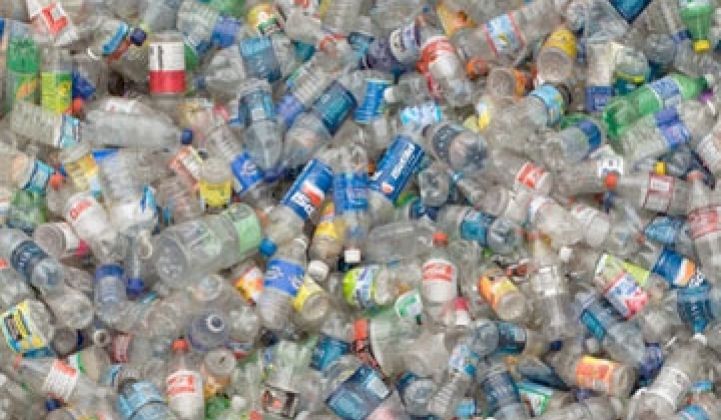If you've never thought of IBM as a plastics company, you'd be wrong.
Big Blue was one of the world's hotbeds of polymer science in the 80s and 90s as part of its overall commitment to material science. This week, IBM and Stanford researchers published a paper describing how they have found ways to employ new forms (organocatalysts) to develop new types of polymer molecules. Ideally, these catalysts could be used to recycle plastic or develop new types of materials.
Organocatalysts have been studied for years, but a surge in published research began toward the beginning of the decade. Companies essentially were looking for a way to phase out metal oxide catalysts, which can sometimes stay behind in the final polymer. IBM's new catalysts become bystanders after the reaction occurs.
What to do about plastic will likely become a larger question over the next few years. Landfills are piling up with plastic, oceans continue to get clogged with it, and the fossil fuels used to make it aren't getting any cheaper. Some of the more novel ideas for recycling plastic are transforming it into railroad ties and building products (Axion International) and feeding it to genetically modified organisms that will transform PET plastic into recyclable plastic (Ireland's Bioplastech).
Like it does with its water technology and lithium-ion battery inventions, IBM will license the technology to manufacturing partners and collect a royalty. But it could find a home in-house: the material could play an instrumental role in a new, unannounced type of lithography, according to Jim Hedrick at IBM Research.
Meanwhile, in the more traditional computing world, Sentilla released a third version of Sentilla Energy Manager. The software builds a model of a data center, determines what the power consumption should be, and then monitors your power consumption to make sure you're not consuming too much.
"Power is half of your operating expense so you should look at it as an asset," said CEO Bob Davis.
One of the more interesting aspects of Sentilla is that it doesn't employ sensors to get a read on data center power consumption. Sentilla's software will take information directly from the meter whenever possible but will then provide a fairly precise estimate of the other equipment. The company gets within a few percentage points of actual power consumption, but lets data center managers avoid a massive upgrade headache. Imagine unplugging every server so you can put a sensor on it. One customer had 20,000 servers, said Davis.
Overall, Sentilla says that it can cut power consumption in data centers by 25 percent by detecting things like "rogue" servers (i.e., servers that are plugged in but not doing anything) and finding ways to virtualize more applications.
Someday, it may use its inference engine to analyze building power consumption.
The Department of Defense has also given $40 million in grants to Westinghouse and General Atomics to study nuclear plants that can provide electricity and heat. That "smoke" you see coming out of nuclear reactors is actually steam. Around 16 percent of the greenhouse gases emitted in the U.S. come from facilities producing industrial steam. Nearly half of the electricity emitted in the U.S. also gets dissipated as waste heat.



